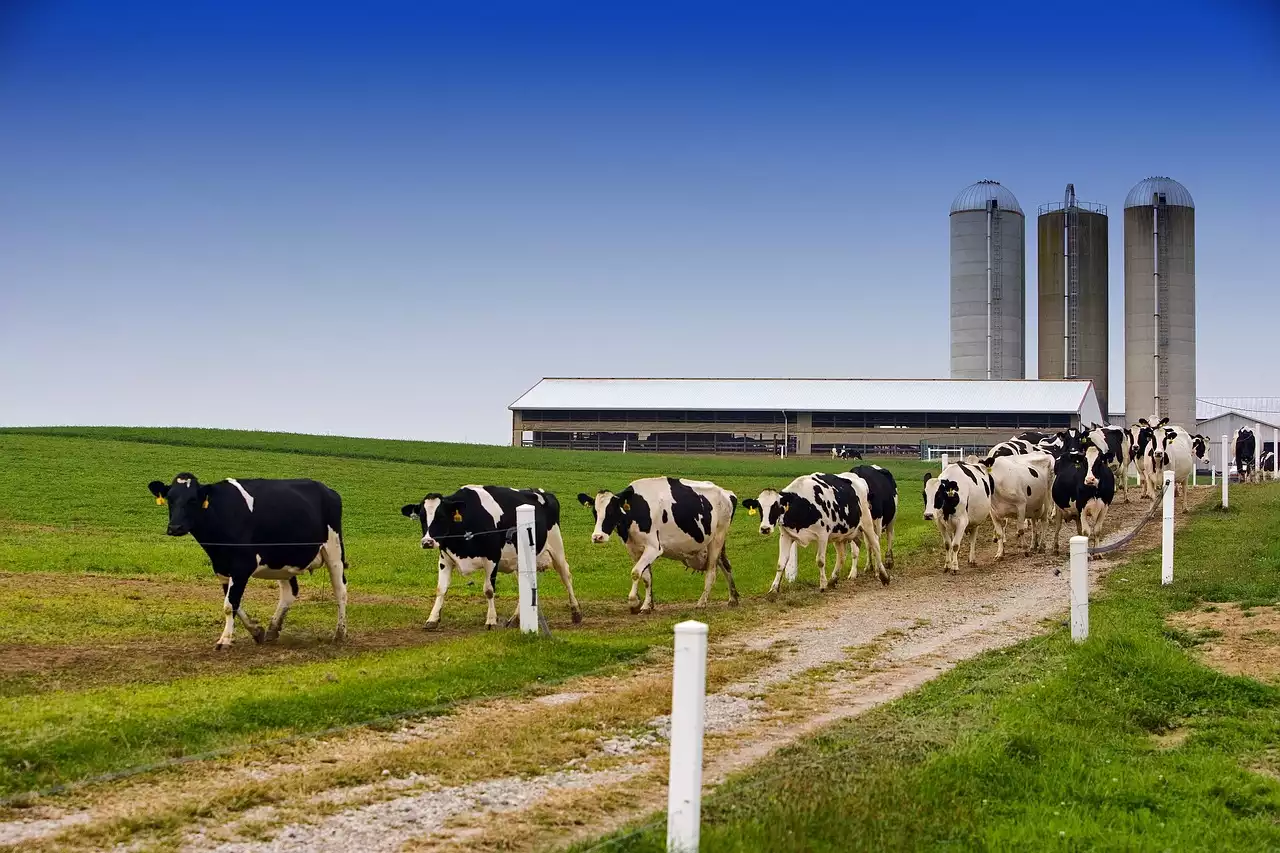Dairy production plays a vital role in the food industry, providing essential nutrients to people all over the world. However, it also has a significant impact on the environment. In this article, we will explore the environmental impacts of dairy production, including greenhouse gas emissions, land use, and water pollution, and provide strategies for reducing the carbon footprint of dairy production.
II. Environmental Impacts of Dairy Production
Dairy production has a significant impact on the environment, with the primary environmental impacts being greenhouse gas emissions, land use, and water pollution.
A. Greenhouse gas emissions
Greenhouse gas emissions from dairy production come from two sources: cattle and manure management.
Methane emissions from cattle: Cows produce methane, a potent greenhouse gas, as a result of enteric fermentation, which is the digestive process that takes place in the rumen of cattle. Methane is released into the atmosphere through the cow's belches.
Nitrous oxide emissions from manure management: Nitrous oxide, another potent greenhouse gas, is produced as a result of manure management practices. The application of manure to cropland as fertilizer releases nitrous oxide into the atmosphere.
B. Land use
Land use for dairy production has two significant environmental impacts: deforestation for pasture and feed crops, and soil degradation.
Deforestation for pasture and feed crops: To produce dairy products, cattle need to be raised on pasture and given feed crops, which requires large amounts of land. The clearing of forests to create pasture and grow feed crops contributes to deforestation and habitat loss.
Soil degradation: The use of pesticides and fertilizers, along with overgrazing, can lead to soil degradation, reducing the productivity of the land and making it more susceptible to erosion.
C. Water pollution and water usage
Dairy production has a significant impact on water resources, with the main environmental impacts being water pollution and high water usage.
Pollution from manure and fertilizers: Manure and fertilizers can leach into nearby water sources, contaminating them with harmful chemicals and nutrients.
High water usage for feed crops and cleaning: Feed crops and cleaning water both require a large amount of water, which can strain water resources and lead to water scarcity in some regions.
III. Strategies to Reduce the Carbon Footprint of Dairy Production
There are several strategies that can be employed to reduce the carbon footprint of dairy production, including sustainable agriculture practices, improved animal nutrition, and renewable energy usage.
A. Sustainable agriculture practices
Sustainable agriculture practices can help reduce the environmental impact of dairy production. Some of these practices include:
Reduced tillage and cover cropping: Reduced tillage and the use of cover crops can help reduce soil erosion, improve soil health, and reduce the need for pesticides and fertilizers.
Manure management: Proper manure management practices can help reduce greenhouse gas emissions, improve soil health, and reduce water pollution. Some practices include using aerobic digestion to reduce methane emissions from manure and implementing nutrient management plans to minimize runoff into nearby water sources.
Conservation grazing: Conservation grazing involves rotating cattle between different pastures to allow for adequate rest and regrowth. This can improve the health of the pasture and reduce the need for additional land for grazing.
B. Improved animal nutrition
Improving the nutrition of dairy cattle can also help reduce their impact on the environment. Some strategies include:
Feed optimization: Feed optimization involves using feed ingredients that are more efficiently digested by cattle, reducing the amount of methane they produce.
Forage-based diets: A diet based on forages such as grasses and legumes can reduce the environmental impact of dairy production, as these feeds require less land and water to produce than traditional feed crops.
C. Renewable energy usage
Using renewable energy sources can help reduce the carbon footprint of dairy production. Some strategies include:
Solar and wind power: Using solar and wind power to meet the energy needs of dairy operations can reduce the need for fossil fuels and decrease greenhouse gas emissions.
Biogas systems: Biogas systems use the methane produced from manure to generate energy, reducing the amount of methane that is released into the atmosphere.
IV. Conclusion
Dairy production has a significant impact on the environment, with the primary impacts being greenhouse gas emissions, land use, and water pollution. However, there are strategies that can be implemented to reduce the carbon footprint of dairy production, including sustainable agriculture practices, improved animal nutrition, and renewable energy usage. By adopting these strategies, the dairy industry can help reduce its impact on the environment and contribute to a more sustainable future.







